Laundry Care Labels: Decode Washing Symbols and Care for Clothes
Decoding laundry symbols on clothing tags is the key to keeping your favorite outfits looking their best. Properly caring for your garments not only extends their lifespan but also helps you save money by avoiding damage like shrinking, fading, or misshaping.
This guide explains the meaning behind common laundry care symbols, empowering you to confidently care for your clothes. When you understand these symbols, you make conscious choices that benefit both your wardrobe and the environment. With this knowledge, you can select the right settings on your washing machine and choose appropriate laundry products.
By mastering these care instructions, you’re taking a step towards reducing clothing waste and embracing a more sustainable approach to fashion. Understanding laundry labels also comes into play when considering the resale value of clothes or donating them, making you a more informed and responsible consumer. This is helpful whether you’re a fashion enthusiast or a small business owner.
1. Introduction to Laundry Care Labels
Laundry care labels, also known as garment tags or clothing labels, are essential guides sewn into your clothes, providing textile care instructions. Their primary purpose is to communicate the manufacturer’s recommendations for proper garment care, ensuring clothing maintenance and preserving the quality of your garments. These tags are your first line of defense against accidental damage during washing, drying, and ironing.
Following these care instructions is vital to prevent mishaps like shrinking, fading, or misshaping. Understanding washing symbols and other fabric care directions allows you to make informed decisions about how to treat each garment, maximizing its lifespan. You’ll find that different fabrics and designs require specific care routines to stay in top condition.
These garment tags typically feature a set of standardized symbols that indicate the appropriate washing, bleaching, drying, ironing, and dry cleaning methods. By familiarizing yourself with these care instructions, you’ll be well-equipped to tackle laundry day with confidence. Deciphering these labels ensures each item receives the correct treatment, maintaining its appearance and feel.
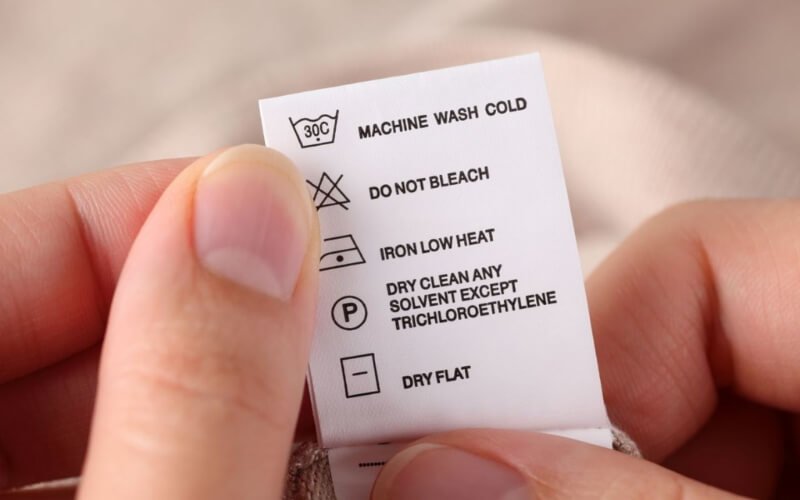
2. Deciphering Washing Symbols: A Comprehensive Guide
Washing symbols found on wash labels serve as a universal language, providing concise washing instructions to guide proper garment care. These symbols transcend language barriers, ensuring everyone can understand how to clean their clothes correctly. Mastering these symbols will help maintain the quality of your clothes. By understanding the nuances of each symbol, you can confidently choose the right washing techniques, water temperature, and machine settings.
These symbols offer a quick reference for machine wash, hand wash, and even specify if an item is unsuitable for washing altogether. Whether it’s adjusting the water temperature with machine wash cold or opting for tumble dry low, these details significantly impact the longevity of your clothing. Following these instructions prevents damage, preserving both the fabric and the appearance of the garment, even specifying when to avoid actions like do not iron or opt for professional dry cleaning.
2.1 Machine Wash Symbols Explained
The machine wash symbol, depicted as a tub, indicates that a garment can safely be washed in a washing machine. Variations of this symbol provide specific instructions regarding water temperature and wash cycle. It’s important to understand these nuances to keep your clothes in shape. The details embedded within and below the tub symbol are key to proper care.
Numbers inside the tub (30, 40, 50) represent the maximum water temperature in degrees Celsius. Dots inside the tub also correlate with water temperature: one dot signifies cold water (65°F to 85°F), two dots indicate warm water (up to 105°F), and three dots represent hot water (up to 120°F). For example, cotton items often withstand higher temperatures, while synthetics require cooler settings.
Bars underneath the tub specify the appropriate wash cycle and spin speed. No bar indicates a normal cycle, suitable for sturdy fabrics like cotton. One bar suggests a permanent press cycle with reduced agitation, ideal for synthetics. Two bars signify a delicate cycle or gentle cycle, best for delicate fabrics such as silk or lace, employing gentle washing and reduced spinning.
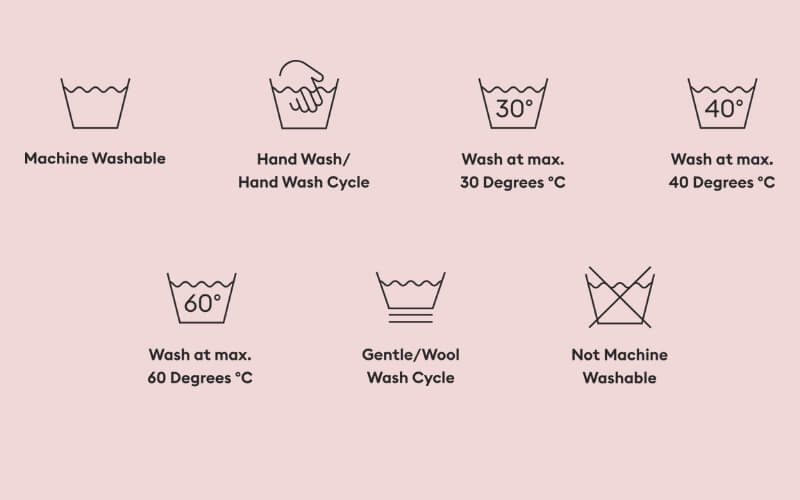
2.2 Hand Wash Only: Caring for Delicate Fabrics
The hand wash symbol, illustrated by a hand in a tub, indicates that a garment requires hand washing. This method is crucial for delicate fabrics that could be damaged in a machine. Hand washing provides a gentle touch, preserving the integrity of items like silk, wool, and lace. The care instructions protect embellished garments from potential harm as well.
Hand washing should generally be done in cool or lukewarm water, around 40°C/104°F or lower. A twisted symbol means the item can be wrung out gently, while a crossed-out twisted symbol advises against wringing. Instead, these items are often recommended to line dry. Hand washing is particularly important for delicate items.
This gentle approach helps maintain the shape and texture of the fabric. It’s a preferred method for items with intricate details or embellishments. Materials like silk, wool, lace, and certain embellished garments benefit from this careful treatment. These fabrics often cannot withstand the mechanical action of a washing machine.
2.3 Do Not Wash Symbol: When to Avoid Washing
The do not wash symbol, represented by a crossed-out tub, indicates that an item should not be washed with water. This is common for materials like leather or suede, which can be severely damaged by water. These items require alternative cleaning methods, like spot cleaning. For tougher stains, seeking a professional service is best.
For items bearing the “do not wash” symbol, alternative care methods are necessary. Spot cleaning can address minor stains, while professional dry cleaning may be required for more thorough cleaning. It’s essential to follow any special care instructions provided by the manufacturer. This symbol often appears on garments with specific treatments or finishes.
Adhering to this symbol is vital to maintaining the item’s quality and appearance. Special care instructions might include using specific cleaning products or avoiding certain treatments. Fabrics like leather and suede are especially sensitive to water, so professional dry clean only is often the best option. Always check the care label for these details.
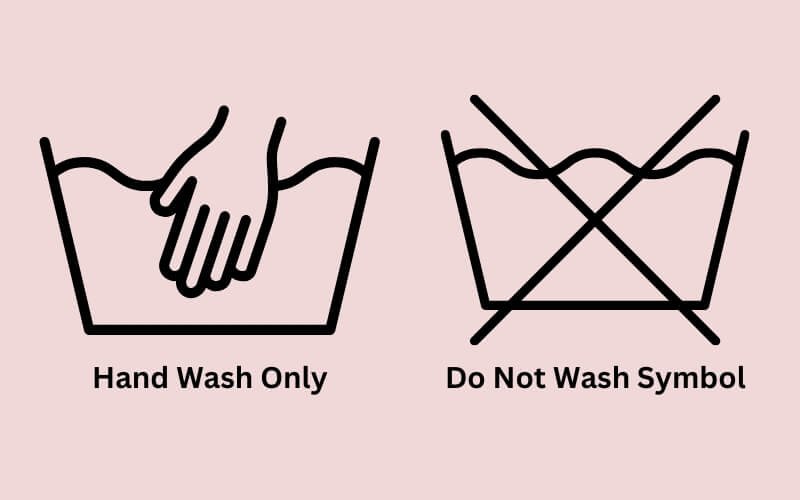
3. Bleaching Symbols: Maintaining Whiteness and Color
The triangle symbol on care labels provides crucial bleaching instructions, guiding you on whether and how to use bleach safely. Understanding these symbols helps you make informed decisions to maintain the vibrancy of your clothes. Different types of bleach serve different purposes, from whitening to stain removal. It is important to know when and how to use each one.
Bleaching can be a powerful tool for whitening whites and removing stubborn stains. However, it’s essential to use the right type of bleach to avoid damaging your garments. The symbols on your clothing tags provide clear guidelines on whether to use chlorine bleach, non-chlorine bleach, or oxygen-based bleach, also known as color-safe bleach. Using the wrong type can lead to discoloration.
Incorrect use of bleach can cause irreversible color damage and weaken fabric fibers. The do not bleach symbol is particularly important to heed, as it indicates fabrics that are especially vulnerable to bleach. Materials like silk, wool, and spandex, as well as many dark or bright colors, should never come into contact with bleach. Ignoring this could permanently damage your garments.
3.1 Types of Bleach: Chlorine vs. Non-Chlorine
A plain triangle on the care label indicates that any type of bleach can be used when needed. This symbol gives you the green light to use either chlorine or non-chlorine bleach. However, it’s still crucial to consider the fabric type and color. A triangle with “CL” inside specifically permits the use of chlorine bleach.
Chlorine bleach is highly effective for whitening white fabrics and removing tough stains. However, it should never be used on colored items. A triangle with two diagonal lines signifies that only non-chlorine bleach, also known as oxygen bleach, is suitable. Oxygen bleach or color-safe bleach is safe for most colored fabrics and is gentler than chlorine bleach.
Non-chlorine or oxygen bleach is often used to brighten colors and remove stains without causing fading. It’s the preferred choice for maintaining the vibrancy of colored garments. Examples include using chlorine bleach for white cotton towels and non-chlorine bleach for colored shirts. Always follow bleaching instructions carefully. These guidelines help to determine the right bleach.
3.2 No Bleach Allowed: Protecting Your Garments
The crossed-out triangle symbol, or do not bleach, indicates that no form of bleach should be used on the garment. This is crucial for preventing color damage and fabric damage. Ignoring this symbol can lead to irreversible harm, including fading, discoloration, and weakening of the fabric fibers, making them prone to tearing.
Certain fabrics are particularly susceptible to bleach damage. For example, silk, wool, and spandex should never be bleached. Dark colors and bright colors can also be severely affected by bleach, leading to noticeable fading and a patchy appearance. It’s essential to heed the do not bleach symbol. This will keep your clothes looking new.
Adhering to the do not bleach instruction is vital for maintaining the integrity and appearance of your clothes. Using bleach on these fabrics can cause permanent damage, ruining the garment’s look and feel. Always check the care label for this symbol before considering bleach. It’s always better to err on the side of caution.
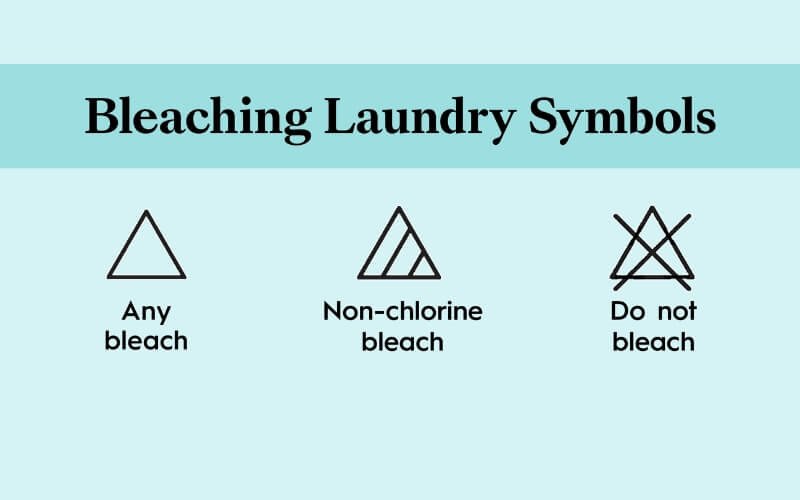
4. Drying Symbols: From Tumble Dry to Air Dry
The square symbol on care labels provides essential drying instructions, indicating the best method to dry your garments. These guidelines help prevent damage like shrinking, stretching, or fading. Properly drying clothes is just as important as washing them correctly. Different fabrics react differently to heat and motion in dryers.
Understanding these drying symbols will help you choose between tumble drying and air drying. It also provides specific instructions on heat settings for tumble drying. For air drying, it specifies whether to hang to dry, dry flat, or avoid wringing. Following these recommendations will extend the life of your clothes.
Different drying methods suit different types of garments. For example, sturdy fabrics like cotton and linen can handle high heat in a tumble dryer. Delicate fabrics, however, require gentler methods like hang to dry or dry flat. Adhering to these instructions ensures your clothes remain in excellent condition, maintaining their shape, size, and texture.
4.1 Tumble Dry Symbols: Understanding Heat Settings
The tumble dry symbol, depicted as a circle inside a square, indicates that an item can be safely dried in a dryer. Dots inside the circle specify the appropriate heat setting. One dot signifies tumble dry low, two dots indicate tumble dry medium, and three dots represent tumble dry high. Using the correct heat setting prevents fabric damage.
An “X” through the tumble dry symbol means do not tumble dry. This is crucial for items that can be damaged by heat or mechanical action. For instance, cotton and linen can generally withstand high heat. Synthetics typically require medium heat. Delicate fabrics should be dried on low heat or air-dried to prevent damage.
Proper heat settings are essential for maintaining fabric integrity. High heat can cause shrinkage or damage to delicate items. Low heat is gentle but may take longer to dry. Medium heat is a good balance for many synthetic fabrics. Always check the care label for the correct tumble dry instructions.
4.2 Hang to Dry and Dry Flat: Alternative Drying Methods
The hang to dry symbol, a square with a curved line at the top, suggests hanging the garment to air dry, often called line dry. This method is ideal for items that might be stretched by the weight of water when wet. The dry flat symbol, a square with a horizontal line in the middle, indicates the need to lay the item flat to dry.
This is crucial for knitwear and delicate fabrics that can lose their shape if hung. A twisted symbol with an “X” means do not wring the item. Wringing can damage fibers and distort the garment’s shape. These air dry methods are gentler than tumble drying, making them suitable for delicate or shrinkable fabrics.
Proper air drying techniques help maintain the garment’s shape and prevent stretching. Using padded hangers can prevent shoulder marks on delicate items. Laying items flat on a clean, absorbent towel helps them dry evenly and retain their shape. These methods are particularly important for items like sweaters, which can stretch out of shape if hung.
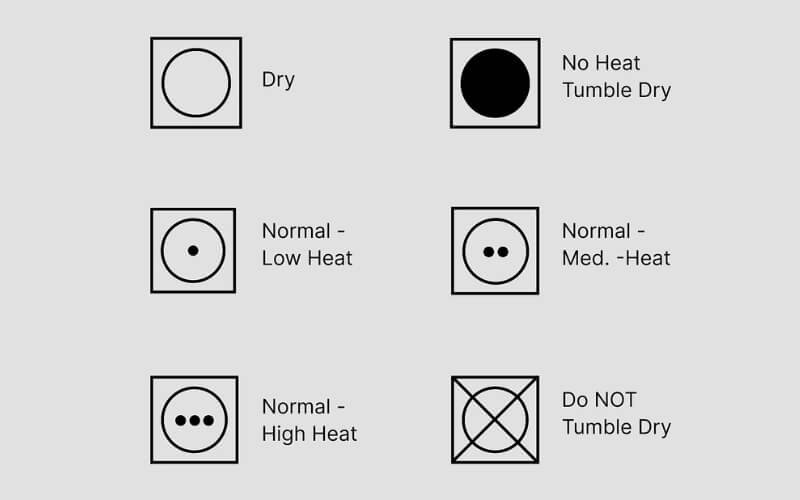
5. Ironing Symbols: Smoothing Out the Wrinkles
The iron symbol on care labels provides essential ironing instructions, indicating whether an item can be safely ironed and at what temperature. Following these guidelines helps prevent damage to your clothes. Using the correct ironing temperature is crucial for achieving a crisp, wrinkle-free finish without harming the fabric. Different materials react differently to heat, making these symbols vital.
Ironing can make a significant difference in the appearance of your clothes. However, using the wrong heat setting can cause irreversible damage. The iron symbol, along with dots inside it, provides a clear guide. This helps you select the appropriate temperature for various fabric types, from delicate silk to sturdy cotton.
Understanding these ironing instructions ensures that you apply the right amount of heat and whether to use steam. Adhering to the do not iron symbol is equally important, especially for heat-sensitive fabrics. By following these guidelines, you can maintain the quality and longevity of your garments. Proper ironing techniques contribute to a polished look.
5.1 Ironing Temperature Guide: Dots and Fabric Types
The iron symbol with dots inside indicates the appropriate ironing temperature. One dot signifies low heat, suitable for delicate fabrics like silk and wool. Two dots represent medium heat, ideal for synthetics. Three dots indicate high heat, best for linen and cotton. An iron symbol with no dots means the item can be ironed at any temperature.
Using the correct ironing temperature is essential to avoid damaging your clothes. Low heat prevents melting or scorching of delicate fabrics such as silk or wool. Medium heat works well for synthetics, providing enough heat to remove wrinkles without causing damage. High heat is necessary for linen and cotton to achieve a crisp finish.
For example, ironing a silk blouse requires low heat to prevent damage. Synthetics like polyester need medium heat. Linen and cotton items often require high heat to smooth out wrinkles effectively. Always check the care label for the specific ironing instructions. Following them ensures the best results.
5.2 No Ironing Allowed: Protecting Heat-Sensitive Fabrics
The crossed-out iron symbol means do not iron. Adhering to this is crucial to prevent irreversible damage to certain fabrics. Heat-sensitive materials can melt, scorch, or develop a permanent shine when exposed to high heat. This symbol is common on items made from synthetics, textured fabrics, and those with prints or embellishments.
Certain synthetics, like nylon, should never be ironed. Textured fabrics can lose their unique finish if ironed. Items with prints or embellishments can be ruined by heat, causing the decorations to melt or peel off. The do not iron symbol also applies to fabrics treated with certain finishes.
It is essential to respect the do not iron and do not steam instructions to maintain the fabric’s integrity and appearance. For example, ironing a garment with a special coating might destroy the finish. Always check the care label for this symbol. If ironing is necessary, consider professional services or alternative methods like steaming.

6. Dry Cleaning Symbols: Professional Care Instructions
The circle symbol on care labels signifies dry cleaning instructions, indicating whether an item requires professional cleaning. These symbols guide both consumers and dry cleaners on the appropriate cleaning method. Understanding these symbols helps ensure that garments receive the correct care. This maintains their appearance and longevity. Dry cleaning is often necessary for delicate or specially treated fabrics.
Dry cleaning instructions are crucial for items that cannot be washed with water. The dry clean symbol, a simple circle, indicates that an item should be professionally cleaned. Letters inside the circle provide specific instructions on the type of solvent to be used. This information is vital for dry cleaners to avoid damaging the garment during the cleaning process.
Adhering to the do not dry clean symbol is equally important. Some items can be harmed by dry cleaning chemicals. For such garments, alternative cleaning methods like hand washing or spot cleaning may be necessary. Always check the care label for these instructions to ensure proper care. Following these guidelines helps maintain the quality of your clothes.
6.1 Understanding Dry Cleaning Solvents: A, F, and P
Letters inside the dry clean symbol indicate the type of solvent that can be used. “A” means any solvent is permissible, providing flexibility for the dry cleaner. “F” signifies that any solvent except Trichloroethylene can be used. “P” indicates that only petroleum solvent should be used. These letters guide dry cleaners in selecting the appropriate dry cleaning chemicals.
These instructions are crucial for ensuring the garment is cleaned safely. Different solvents have varying effects on fabrics. For example, petroleum solvent is often gentler than other options. Using the correct solvent prevents damage such as color fading, shrinking, or texture changes. Dry cleaners rely on these symbols to provide proper professional cleaning.
The significance of these letters lies in their ability to guide the dry cleaning process. They ensure that the chosen solvent is compatible with the fabric. This precision helps maintain the garment’s quality and appearance. Always refer to the care label to understand which solvent is appropriate. Proper solvent selection is a key aspect of professional cleaning.
6.2 Do Not Dry Clean: When to Avoid Professional Cleaning
The crossed-out circle symbol means do not dry clean. This indicates that an item should not undergo professional dry cleaning. Such items may require alternative cleaning methods. These can include hand wash only, spot cleaning, or other specialized care. It is important to follow these special care instructions closely.
Items with the do not dry clean symbol often have specific properties that can be damaged by dry cleaning chemicals. For example, certain dyes or finishes may react negatively to these solvents. Hand washing or spot cleaning might be the recommended alternative cleaning methods. These gentler approaches help maintain the garment’s integrity without causing harm.
Understanding and adhering to the do not dry clean symbol is crucial for preserving the garment’s quality. Alternative cleaning methods ensure the item is cleaned safely. Always check the care label for this symbol and follow any accompanying instructions. Proper care ensures the longevity and appearance of your clothes.
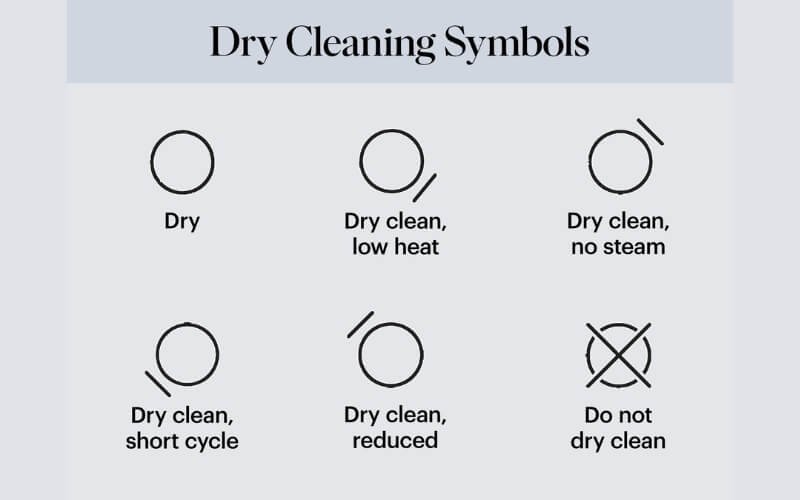
7. The Importance of Following Laundry Symbols: Environmental and Economic Benefits
Following laundry symbols is not just about keeping clothes clean; it has significant environmental and economic benefits. Proper garment care, guided by these symbols, directly contributes to garment longevity. This means you can save money by not having to replace clothes frequently. Extending the life of your garments reduces the demand for new clothing. This small change can make a big difference.
Reducing textile waste is a crucial aspect of environmental responsibility. By properly caring for clothes, we contribute to a more sustainable approach to fashion. This helps decrease the amount of clothing that ends up in landfills. Additionally, correct washing settings, as indicated on care labels, help in water conservation and energy saving. Using the right temperature and cycle minimizes resource use.
Proper care also enables clothing donation or resale, giving garments a second life. This practice further reduces textile waste and supports a circular economy. When clothes are well-maintained, they remain in good condition. This makes them suitable for others to use, promoting sustainability. It’s a win-win situation for both your wallet and the planet.
Laundry care labels play a vital role in fabric maintenance, ensuring that garments look and perform as intended. Proper care maintains the aesthetics and functionality of clothes. This means your favorite items will last longer and continue to look great. By adhering to these guidelines, you’re making a positive impact. You help to protect the environment while also enjoying long-lasting use of your clothes.
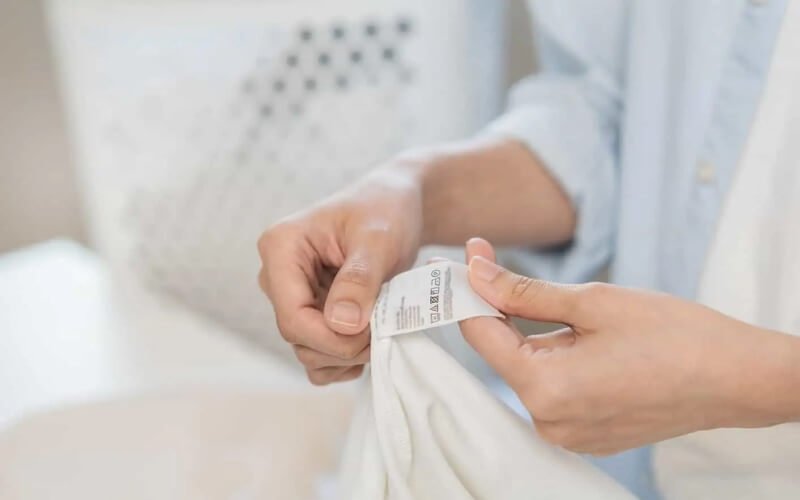
8. FAQs about Laundry Care Labels
8.1 What are the 5 main laundry symbols?
The five main categories of laundry symbols found on care labels are washing symbols, bleaching symbols, drying symbols, ironing symbols, and dry cleaning symbols. Each category provides specific instructions for garment care. Washing symbols guide you on how to wash the item, including water temperature and cycle type. Bleaching symbols indicate whether and how to use bleach.
Drying symbols provide instructions for tumble drying or air drying. Ironing symbols specify the appropriate ironing temperature and whether to use steam. Dry cleaning symbols indicate if professional cleaning is required and which solvents are safe. Together, these laundry symbols, also known as care label symbols, ensure proper garment care. They help maintain the quality of your clothes.
8.2 Where can I find the laundry care label on my clothes?
Care labels are typically found in a few common locations on garments. You can often find the clothing tag inside the collar, along the side seam, or on the waistband. Knowing the care label location helps you quickly access the garment label for proper care instructions. These are the standard places to find care labels.
Checking these areas will usually lead you to the care label. Some garments may have the label in a different spot. However, the inside collar, side seam, and waistband are the most common places. Once you locate the label, you can follow the instructions. This helps ensure you care for your clothes correctly.
8.3 What does “dry clean only” mean?
“Dry clean only” means the garment requires professional cleaning and should not be washed at home. Conventional washing methods may damage the fabric or alter the garment’s shape. This instruction signifies that special care is needed. The dry cleaning process uses specific solvents to clean delicate items.
Garments labeled “dry clean only” often have delicate fabrics or special finishes. These can be ruined by water or machine washing. Professional dry cleaning ensures the item is cleaned safely and effectively. It is important to follow this instruction to maintain the garment’s quality. Ignoring it can lead to irreversible damage, so always seek professional cleaning.
8.4 Can I ignore laundry care labels?
Ignoring laundry care labels can lead to significant garment damage, ultimately reducing the garment’s lifespan. Following the instructions on these labels is essential for proper care. Mistakes such as using the wrong water temperature, incorrect drying methods, or improper ironing can cause shrinking, fading, stretching, or misshaping. These laundry mistakes can ruin your clothes.
Proper care, as indicated by the care labels, helps maintain the quality and appearance of your garments. Fabric damage can occur if you ignore these instructions. This can include color fading, fabric weakening, and changes in texture. Adhering to the care label recommendations ensures that your clothes last longer and stay in good condition, avoiding such issues.
8.5 What is the best material for durable laundry care labels?
Durable laundry labels are typically made from materials like woven polyester, satin, or heat transfer labels. These materials can withstand repeated washing and maintain legibility over time. Woven labels and heat transfer labels are particularly recommended for laundry care instructions. Their durability and wash-resistant properties make them ideal.
Woven labels are known for their longevity and ability to retain their print even after many washes. Polyester labels and satin labels are also good choices. Heat transfer labels provide a smooth finish and are highly durable. Choosing long-lasting care label materials ensures that the instructions remain legible. This allows for continued proper care of the garment.
9. My Pack Love – Providing Services for Custom Laundry Care Labels and More
My Pack Love offers high-quality custom labels and packaging solutions tailored to both individuals and businesses. We specialize in creating products that enhance your brand’s image. Our services include custom laundry care labels, clothing labels, and a variety of other branding essentials. Whether you’re a small business owner or an individual crafter, we have the right solutions for you.
For small businesses just starting, our Value Booster Kit is an excellent choice. It includes 50 woven labels, 50 hang tags, 100 stickers, and 25 thank-you cards. This kit provides a comprehensive set of branding tools. It’s designed to enhance your product presentation and create a cohesive brand identity. This kit has all you need to make a great first impression.
Woven labels are the most common type of clothing label and are made of fabric, typically polyester or cotton, and are sewn onto garments. Woven labels are durable and can withstand many washes, making them ideal for clothing and accessories. Heat transfer labels are a great option for delicate fabrics or for items that will be washed frequently. They are applied to garments using heat and pressure, creating a smooth, integrated look.
Rubber labels are a durable and long-lasting option for garments that will be exposed to the elements, such as outdoor gear or workwear. They are made of PVC or silicone and can be sewn or glued onto garments. In addition to labels, we offer practical packaging solutions like zipper bags. These clear, resealable plastic bags are perfect for food storage, organizing small items, or protecting products during shipping.
Poly mailers are another excellent option, especially for e-commerce businesses. These lightweight, waterproof, and tear-resistant plastic envelopes are perfect for shipping non-fragile items like clothing. They provide protection during transit while keeping shipping costs low. My Pack Love allows you to customize labels with your logo, care instructions, and other branding elements, creating a unique and professional look.
Read more:
Understanding and following laundry care labels is a crucial aspect of responsible garment care. These small tags offer vital information that can significantly impact the lifespan of your clothing. By adhering to these guidelines, you ensure that your garments receive the proper treatment they need. This practice extends garment longevity and helps you avoid unnecessary expenses.
Proper garment care yields multiple benefits. It extends the life of your clothes, saving you money by reducing the need for frequent replacements. It also makes a positive contribution to environmental sustainability. By keeping clothes in good condition for longer, you help minimize textile waste. Making informed decisions about laundry practices is both economically and environmentally beneficial.
We encourage you to pay close attention to care labels and adopt better laundry habits. Doing so will maximize the lifespan and appearance of your clothing. Well-maintained garments not only look better but also last longer. This simple practice can make a significant difference in the long run. It benefits both your wallet and the environment.
My Pack Love is a valuable resource for high-quality custom labels, including woven labels, heat transfer labels, and rubber labels. We help individuals and businesses enhance their brand image






















